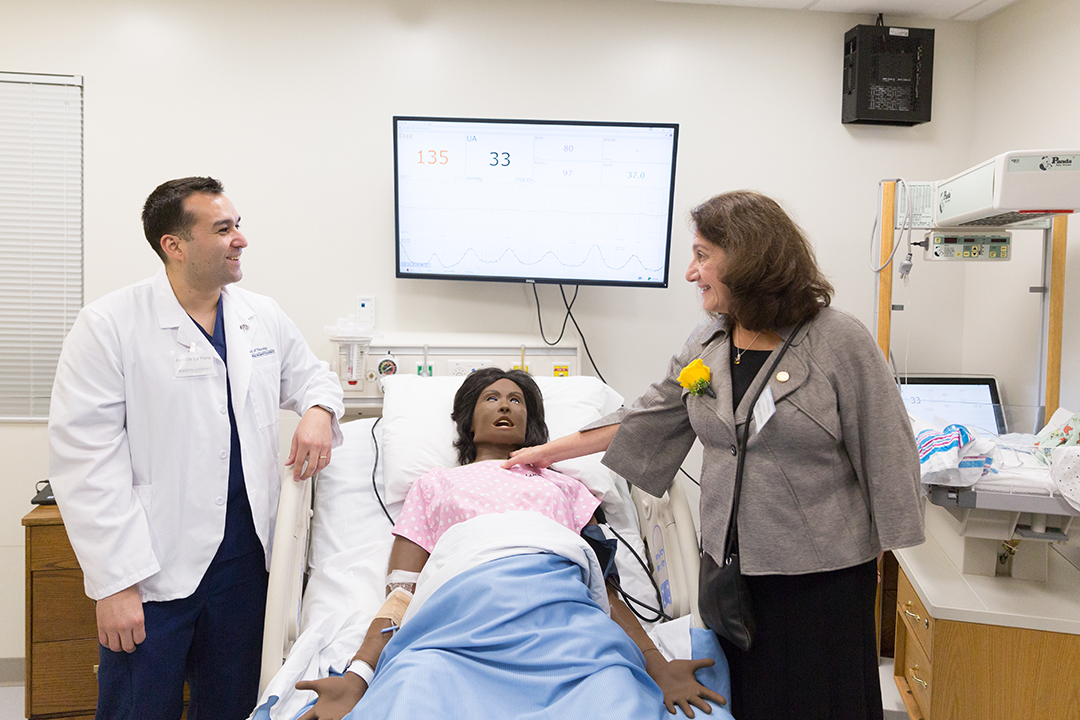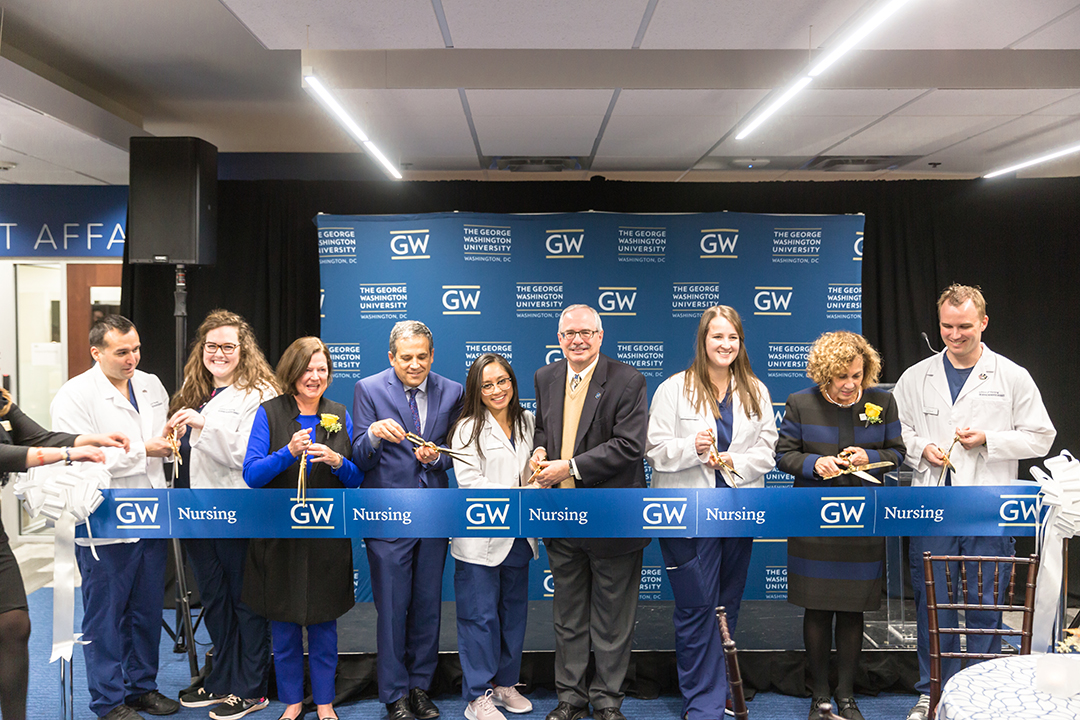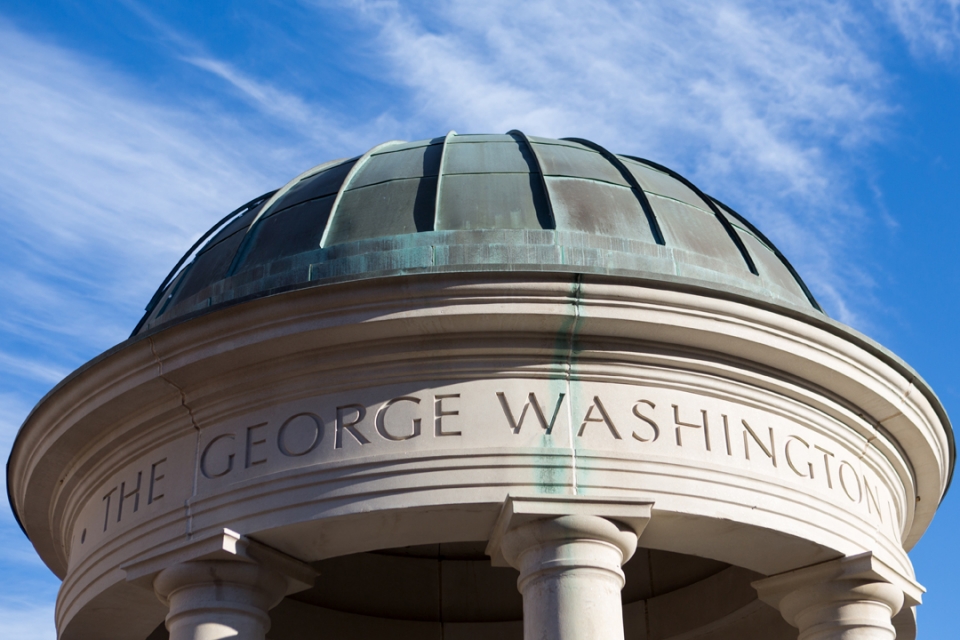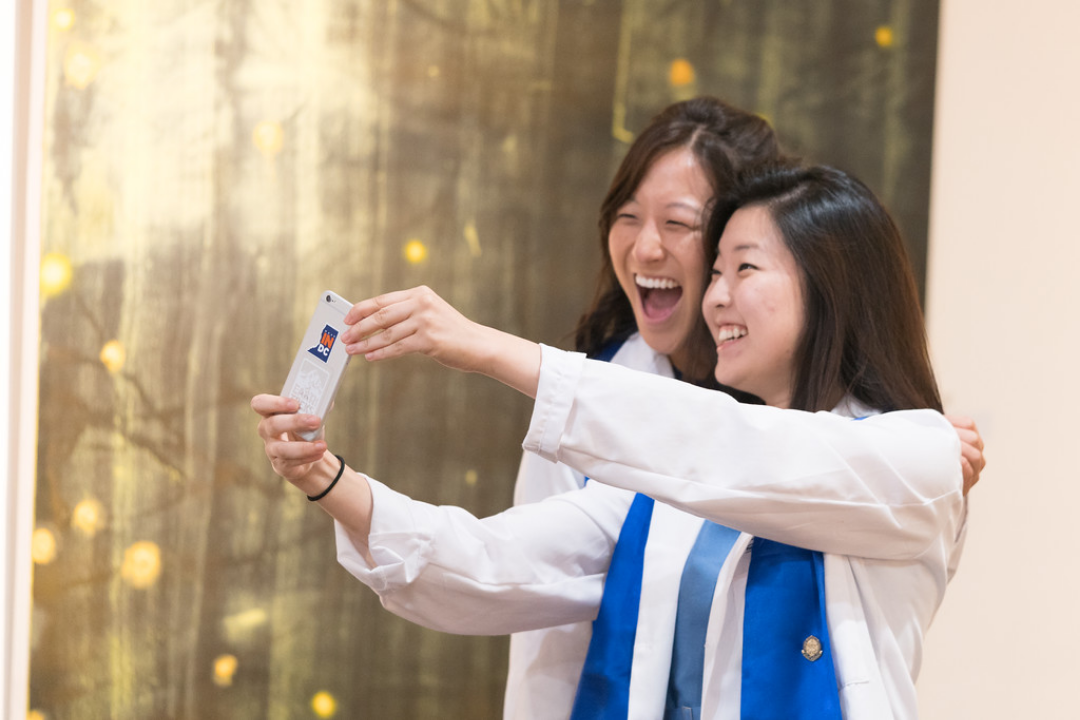By Kristen Mitchell
New simulation lab space that allows George Washington University School of Nursing students to practice procedures and new skills will make future nurses better equipped to meet the health care needs of patients.
Students, faculty and staff from GW Nursing gathered on Wednesday to celebrate the opening of the new simulation lab space and Student Success Center at Innovation Hall on the Virginia Science and Technology Campus. The new facilities put GW Nursing at the cutting edge of educational technology for health professionals.
With the opening of the simulation lab, the university has nearly doubled the amount of space where GW Nursing students can try new methods and learn from their mistakes in a safe and controlled environment. GW President Thomas LeBlanc said the university is committed to building a physical infrastructure that is conducive to fostering student learning and community.
Simulation offers the ability to create real-life scenarios through which students develop, refine and apply knowledge and skills without the risk of harming patients. This kind of training is an important strategy for students in a clinical setting, Dr. LeBlanc said. If students aren’t simulating—they’re poking you.
“Trust me, you’d much prefer a simulation,” he said.
The Simulation Learning and Innovation Center on the third floor of Innovation Hall houses a variety of simulated patients and standard clinical equipment, such as IV pumps and EKG monitors—all to make the simulation space feel as close to a real clinical setting as possible.
This space includes replicated examination rooms where students can act out a clinical scenario while an instructor listens and watches from the outside. The school also has several adult simulation mannequins that can be programmed to cough and report symptoms like aches and pains, and another pediatric mannequin that replicates the challenges of working with young patients.

Nursing students are able to practice procedures and new skills using simulation mannequins that have a pulse and can be programmed to cough and report symptoms like aches and pains. (Photo: GW Nursing)
Dr. LeBlanc said he and Provost Forrest Maltzman have been eagerly awaiting the opening of the simulation lab and new student space, which includes room for open collaboration. A significant number of GW Nursing students complete the bulk of their education online, and the new student space will ensure they feel welcome and part of the GW community when they come to campus for experiential learning and test taking.
“The opening of these two spaces reflects the unwavering commitment of the School of Nursing and GW to elevate the student experience,” Dr. LeBlanc said.
Dr. LeBlanc thanked the donors, GW Nursing leadership and faculty and community partners for their commitment to the new facility and growing school. Pamela Jeffries, dean of GW Nursing, said the two new spaces are critical to helping the university advance its mission of improving patient care and called the opening an exciting time for the young school.
“Despite only being eight years old, GW is actively preparing leaders and providers to improve the health care of people and communities across the country and beyond,” she said. “We are leveraging our presence in the nation’s capital region to advance societal well-being, not only in the classroom, but also in our clinics across local and global communities and in the statehouse. These new centers are critical to help us advance our mission while realizing this vision.”
Ellen Dawson, professor emeritus, highlighted Innovation Hall’s new donor wall, a visual representation of those who have given to the school and made the new simulation lab and student space possible. She encouraged those interested in supporting the school to donate to the Founding Faculty Scholarship Project, which will provide a scholarship for one GW Nursing student every year. The first scholarship will be awarded next June.
It’s common for people to assume their small donations won’t be significant, but “as a group you can make a big difference,” she said.




